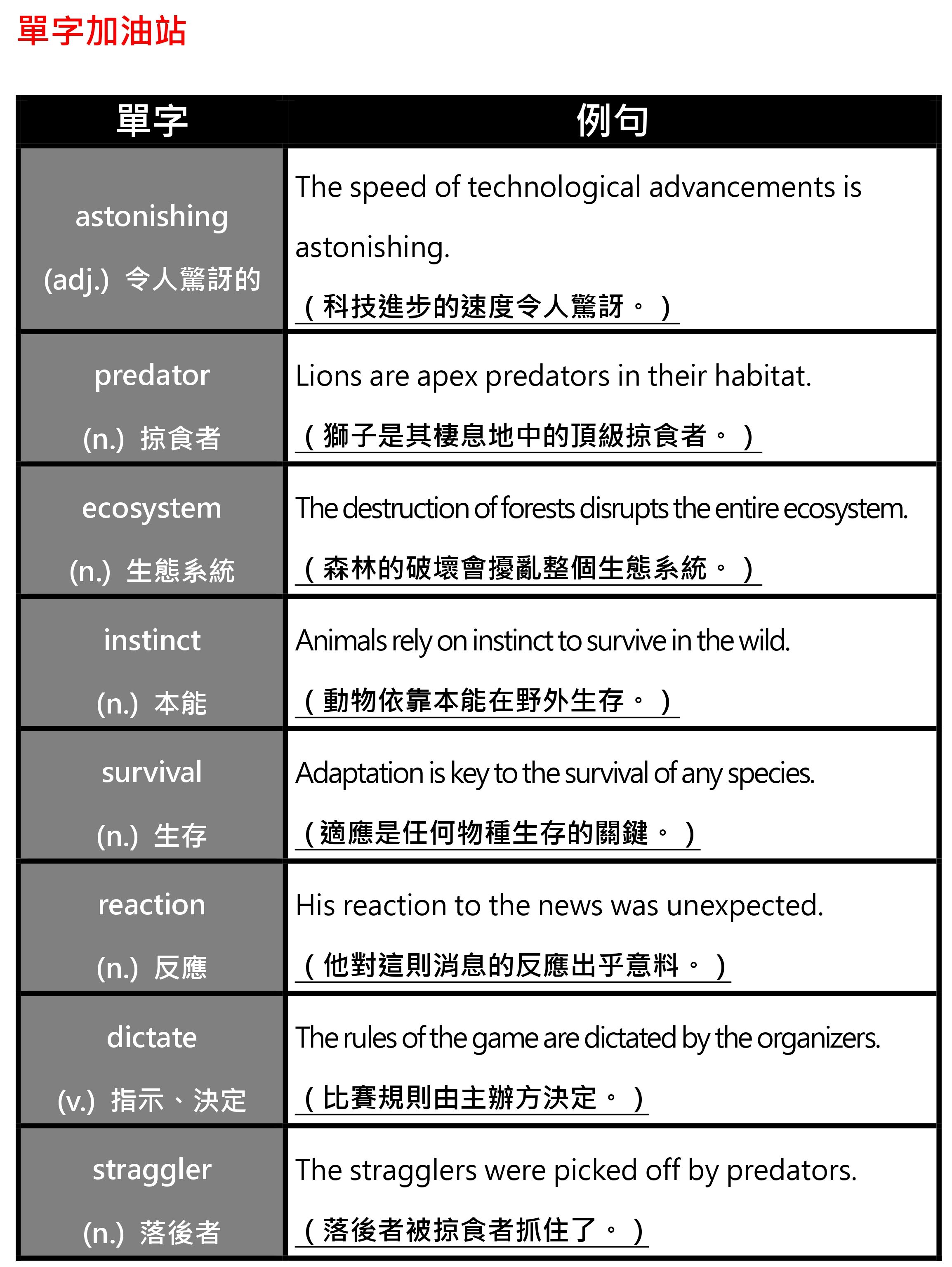四、閱讀測驗
The Great Migration is the largest herd movement of animals on the planet. The numbers areastonishing: over 1.5 million wildebeests, zebras, and antelopes move in a constant cycle through theSerengeti-Mara ecosystem in search of nutritious grass and water. Guided by survival instinct, eachwildebeest will cover 800 to 1,000 km on its individual journey along age-old migration routes. Hungrypredators, including lions, leopards, cheetahs, hyenas, wild dogs, and crocodiles, ensure the strongestsurvive in this natural spectacle. This is also known as ‘the greatest show on Earth.’
The animals travel from the Ngorongoro Conservation Area in southern Serengeti, Tanzania, throughthe Serengeti, into the Masai Mara in Kenya, and then back again. The journey is beset with danger: youngcalves are snatched by predators, the slow ones are brought down by prides of lion, brave beasts break legson steep river slopes, crocodiles take their share of the stragglers, and the weak and exhausted drown.
As for the three major animals of the migrant grazers, they have different grass-eating habits: as onegroup eats the top of the tallest grass, the next group will eat away some of the medium-height grass untilfinally it is almost completely eaten, and the herds move on. This means each group sticks to its kind withonly a tiny overlap in their distributions. The grasses of the plains have the highest protein contentthroughout the Serengeti and are also high in calcium.
It is unclear how the wildebeests know which way to go. However, it is generally believed that theirjourney is dictated primarily by their response to the weather. They probably follow the rains and new grassgrowth. Some experts believe the animals react to lightning and thunderstorms in the distance. It has evenbeen suggested that wildebeest can locate rain more than 50 km away.
【題組】37. According to this article, why can the wildebeests know their routes in the Great Migration?
(A) They tend to choose the routes away from hungry predators.
(B) They rely on their reaction to the earth’s magnetic fields.
(C) They can find cut shorts to return to Tanzania.
(D) They can detect rain more than 50 km away.




